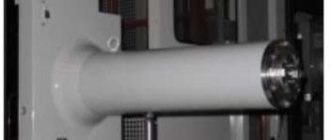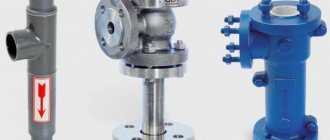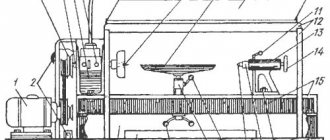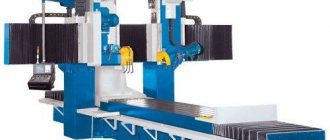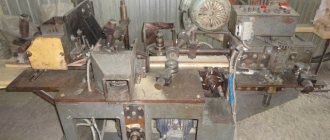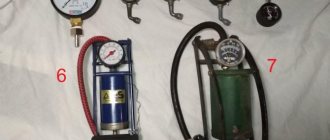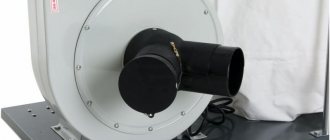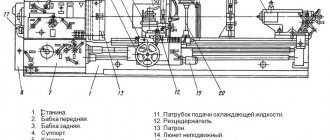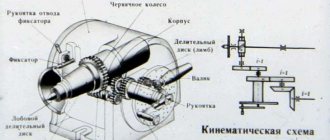Transistor KT3102 - epitaxial-planar, npn structure, silicon, universal. It is used in low-frequency devices that are demanding on noise levels, as well as in generator and amplifier mid-range and high-frequency devices. It is complementary to the KT3107 transistor KT3102A, KT3102B, KT3102V, KT3102G, KT3102D, KT3102E are produced in a metal case. KT3102AM, KT3102BM, KT3102VM, KT3102GM, KT3102DM, KT3102EM are produced in a plastic case. Conclusions are flexible.
Transistors are marked as follows: KT3102A, KT3102B, KT3102V, KT3102G, KT3102D, KT3102E
on the side surface of the case there is a direct inscription, KT3102AM, KT3102BM, KT3102VM, KT3102GM, KT3102DM, KT3102EM in the same inscription, but there is also color marking. The plastic version is sometimes indicated by a green mark on the side of the case, and the specific type of device is already indicated on the end of the case by a mark of the following color:
| KT3102AM | - dark red |
| KT3102BM | - yellow |
| KT3102VM | - dark green |
| KT3102GM | - blue |
| KT3102DM | — blue |
| KT3102EM | - white |
All parameter values indicated below for transistors KT3102(A-E) are valid for the corresponding parameters of transistors KT3102(AM-EM).
Characteristics of transistor KT3102
| Transistor | Ukbo(s),V | Ukeo(i), V | Iкmax(s), mA | Pкmax(t), mW | h21e | fgr., MHz |
| KT3102A | 50 | 50 | 100(200) | 250 | 100-200 | >150 |
| KT3102AM | 50 | 50 | 100(200) | 250 | 100-200 | >150 |
| KT3102B | 50 | 50 | 100(200) | 250 | 200-500 | >150 |
| KT3102BM | 50 | 50 | 100(200) | 250 | 200-500 | >150 |
| KT3102V | 30 | 30 | 100(200) | 250 | 200-500 | >150 |
| KT3102VM | 30 | 30 | 100(200) | 250 | 200-500 | >150 |
| KT3102G | 20 | 20 | 100(200) | 250 | 400-1000 | >150 |
| KT3102GM | 20 | 20 | 100(200) | 250 | 400-1000 | >150 |
| KT3102D | 30 | 30 | 100(200) | 250 | 200-500 | >150 |
| KT3102DM | 30 | 30 | 100(200) | 250 | 200-500 | >150 |
| KT3102E | 20 | 20 | 100(200) | 250 | 400-1000 | >150 |
| KT3102EM | 20 | 20 | 100(200) | 250 | 400-1000 | >150 |
| KT3102ZH | 20 | 20 | 100(200) | 250 | 100-250 | >150 |
| KT3102ZhM | 20 | 20 | 100(200) | 250 | 100-250 | >150 |
Ukbo(s)
— Maximum permissible voltage (pulse) collector-base
Ukeo(i)
— Maximum permissible voltage (pulse) collector-emitter
Iкmax(i)
— Maximum permissible constant (pulse) collector current
Pкmax(т)
— Maximum permissible constant power dissipation of the collector without a heat sink (with heat sink)
h21e
- Static current transfer coefficient of a bipolar transistor in a circuit with a common emitter
fgr
- cutoff frequency of the current transfer coefficient in a circuit with a common emitter
DataSheet
Pinout of transistors KT3102 (left) and KT3102M, KT3102-2 (right)
Description
Silicon epitaxial-planar npn transistors are determined high-frequency low-power with a normalized noise figure at a frequency of 1 kHz. Designed for use in high-frequency amplifier and generator circuits, they are complementary to transistors KT3107A - KT3107L. Available in metal-glass or plastic housings with flexible leads. The type designation is shown on the side of the housing. Transistor weight no more than 0.5 g. Parameters of transistors KT3102 and KT3102M
| Parameter | Designation | Marking | Conditions | Meaning | Unit change |
| Analogue | KT3102A | BF291, 2SC302, BCY56, BC407 *1, BCW31R *1, 40637 *1 | |||
| KT3102B | BCW72R *1, BCW32R *1 | ||||
| KT3102V | 2SC105, SE4022 *3, BFY18 *2, BFY17 *2, BSX76, 2SC55, BC408 *1, BC409 *1, 2SC238, 2SC1216 *2 | ||||
| KT3102G | |||||
| KT3102D | 2SC105, SE4022 *3, BFY18 *2, BFY17 *2, BSX76, 2 SC55, BC408 *1, BC409 *1, 2SC238, 2SC1216 *2 | ||||
| KT3102E | |||||
| KT3102ZH | |||||
| KT3102I | |||||
| KT3102K | |||||
| KT3102A(M) | BC107AR, BC3I7 (BC 182A), VS317A, TVS547, NTE2369, JC547, BCW71 *1, 2SC382TM *2, ECG2418, 2SC3653, 2SC945L, 2SC3654, VS550,2SC3655, ECG2359, 2SC3656, BC549A | ||||
| KT3102B(M) | VS107VR, VSZ18 (VS 182V), 2SC945P, 2SC945Q, TVS547A, JC547A, BCW72R *1, ВС317В, VS317, VS550V, VS560 *2, VS414, VS414V | ||||
| KT3102V(M) | VS108AR, 2SC1815 (VS183V), VS123 *2, VS549V, BF254-4, 2SC4922GA *1, TVS548A, TVS548, JC548A, ITT9014CU, ITT9014C, 2SC388A-TM *2, 2SC1359, ВС409 | ||||
| KT3102G(M) | BC108SR (BCY57) | ||||
| KT3102D(M) | VS184A, 2N2484 (VS452, VS547A), VS123 *2, VS549V, BF254-4, 2SC4922GA *1, TVS548A, TVS548, JC548A, ITT9014CU, ITT9014C, 2SC388A-TM *2, 2SC1359, ВС409 | ||||
| KT3102E(M) | VS109SR, VS547V (VS538, VS548V) | ||||
| KT3102Zh(M) | 2N4123 (ВС183А, ВС549С) | ||||
| KT3102I(M) | BCY65 (2N4123) | ||||
| KT3102K(M) | VS452 (2N4124, VS548V) | ||||
| Structure | — | npn | |||
| Maximum permissible continuous collector power dissipation | PK max,P*K, τ max,P**K, and max | — | — | 250 | mW |
| Cutoff frequency of transistor current transfer coefficient for a circuit with a common emitter | fgr, f*h21b, f**h21e, f***max | KT3102A(M) | — | ≥150 | MHz |
| KT3102B(M) | — | ≥150 | |||
| KT3102V(M) | — | ≥150 | |||
| KT3102G(M) | — | ≥300 | |||
| KT3102D(M) | — | ≥150 | |||
| KT3102E(M) | — | ≥300 | |||
| KT3102Zh(M) | — | ≥200 | |||
| KT3102I(M) | — | ≥200 | |||
| KT3102K(M) | ≥200 | ||||
| Collector-Base Breakdown Voltage for a Given Collector Reverse Current and Emitter Open Circuit | UKBO sample, U*KER sample, U**KEO sample. | KT3102A(M) | — | 50 | IN |
| KT3102B(M) | — | 50 | |||
| KT3102V(M) | — | 50(30) | |||
| KT3102G(M) | — | 20 | |||
| KT3102D(M) | — | 30(50) | |||
| KT3102E(M) | — | 20 | |||
| KT3102Zh(M) | — | 50 | |||
| KT3102I(M) | — | 50 | |||
| KT3102K(M) | — | 30 | |||
| Emitter-base breakdown voltage for a given emitter reverse current and open collector circuit | UEBO sample, | KT3102A(M) | — | 5 | IN |
| KT3102B(M) | — | 5 | |||
| KT3102V(M) | — | 5 | |||
| KT3102G(M) | — | 5 | |||
| KT3102D(M) | — | 5 | |||
| KT3102E(M) | — | 5 | |||
| KT3102Zh(M) | — | 5 | |||
| KT3102I(M) | — | 5 | |||
| KT3102K(M) | — | 5 | |||
| Maximum permissible DC collector current | IK max, I*K, and max | KT3102A(M) | — | 100(200*) | mA |
| KT3102B(M) | — | 100(200*) | |||
| KT3102V(M) | — | 100(200*) | |||
| KT3102G(M) | — | 100(200*) | |||
| KT3102D(M) | — | 100(200*) | |||
| KT3102E(M) | — | 100(200*) | |||
| KT3102Zh(M) | — | 100(200*) | |||
| KT3102I(M) | — | 100(200*) | |||
| KT3102K(M) | — | 100(200*) | |||
| Reverse collector current - current through the collector junction at a given reverse collector-base voltage and open emitter terminal | IKBO, I*KER, I**KEO | KT3102A(M) | 50 V | ≤0.05 | µA |
| KT3102B(M) | 50 V | ≤0.05 | |||
| KT3102V(M) | 30 V | ≤0.015 | |||
| KT3102G(M) | 20(30) V | ≤0.015 | |||
| KT3102D(M) | 30 V | ≤0.015 | |||
| KT3102E(M) | 20(30) V | ≤0.015 | |||
| KT3102Zh(M) | 50 V | ≤0.05 | |||
| KT3102I(M) | 50 V | ≤0.05 | |||
| KT3102K(M) | 30 V | ≤0.015 | |||
| Static small-signal current transfer ratio of a transistor for common-emitter circuits | h21e, h*21e | KT3102A (M) | 5 V; 2 mA | 100…200 | |
| KT3102B(M) | 5 V; 1(2) mA | 200…500 | |||
| KT3102V(M) | 5 V; 2 mA | 200…500 | |||
| KT3102G(M) | 5 V; 2 mA | 400…1000 | |||
| KT3102D(M) | 5 V; 2 mA | 200…500 | |||
| KT3102E(M) | 5 V; 2 mA | 400…1000 | |||
| KT3102Zh(M) | 5 V; 2 mA | 100…250 | |||
| KT3102I(M) | 5 V; 2 mA | 200…500 | |||
| KT3102K(M) | 5 V; 2 mA | 200…500 | |||
| Collector junction capacitance | ck, s*12e | KT3102A(M) | 5 V | ≤6 | pF |
| KT3102B(M) | 5 V | ≤6 | |||
| KT3102V(M) | 5 V | ≤6 | |||
| KT3102G(M) | 5 V | ≤6 | |||
| KT3102D(M) | 5 V | ≤6 | |||
| KT3102E(M) | 5 V | ≤6 | |||
| KT3102Zh(M) | 5 V | ≤6 | |||
| KT3102I(M) | 5 V | ≤6 | |||
| KT3102K(M) | 5 V | ≤6 | |||
| Saturation resistance between collector and emitter | rKE us, r*BE us | KT3102A(M) | — | — | Ohm |
| KT3102B(M) | — | — | |||
| KT3102V(M) | — | — | |||
| KT3102G(M) | — | — | |||
| KT3102D(M) | — | — | |||
| KT3102E(M) | — | — | |||
| KT3102Zh(M) | — | — | |||
| KT3102I(M) | — | — | |||
| KT3102K(M) | — | — | |||
| Transistor noise figure | Ksh, r*b, Pout | KT3102A(M) | 1 kHz | ≤10 | dB, Ohm, W |
| KT3102B(M) | 1 kHz | ≤10 | |||
| KT3102V(M) | 1 kHz | ≤10 | |||
| KT3102G(M) | 1 kHz | ≤10 | |||
| KT3102D(M) | 1 kHz | ≤4 | |||
| KT3102E(M) | 1 kHz | ≤4 | |||
| KT3102Zh(M) | — | — | |||
| KT3102I(M) | — | — | |||
| KT3102K(M) | — | — | |||
| High Frequency Feedback Time Constant | τk, t*ras, t**off, t***pk(ns) | KT3102A(M) | — | ≤100 | ps |
| KT3102B(M) | — | ≤100 | |||
| KT3102V(M) | — | ≤100 | |||
| KT3102G(M) | — | ≤100 | |||
| KT3102D(M) | — | ≤100 | |||
| KT3102E(M) | — | ≤100 | |||
| KT3102Zh(M) | — | ≤100 | |||
| KT3102I(M) | — | ≤100 | |||
| KT3102K(M) | — | ≤100 |
For a description of values with asterisks (*,**,***), see the table of bipolar transistor parameters.
*1 - analogue in electrical parameters, housing type is different.
*2 - functional replacement, case type is similar.
*3 - functional replacement, case type is different.
| Input characteristics | Dependence of saturation voltage on saturation coefficient |
| Dependence of static current transfer coefficient on emitter current | Dependence of static current transfer coefficient on emitter current |
Parameters of transistor KT3102-2
| Parameter | Designation | Conditions | Meaning | Unit change | |
| Structure | Marking | — | npn | ||
| Maximum permissible continuous collector power dissipation | PK max,P*K, τ max,P**K, and max | — | — | 250 | mW |
| Cutoff frequency of transistor current transfer coefficient for a circuit with a common emitter | fgr, f*h21b, f**h21e, f***max | KT3102A2 | — | ≥200 | MHz |
| KT3102B2 | — | ≥200 | |||
| KT3102V2 | — | ≥200 | |||
| KT3102G2 | — | ≥200 | |||
| KT3102D2 | — | ≥200 | |||
| KT3102E2 | — | ≥300 | |||
| KT3102Zh2 | — | ≥200 | |||
| KT3102I2 | — | ≥200 | |||
| KT3102K2 | ≥200 | ||||
| Collector-Base Breakdown Voltage for a Given Collector Reverse Current and Emitter Open Circuit | UKBO sample, U*KER sample, U**KEO sample. | KT3102A2 | — | 50 | IN |
| KT3102B2 | — | 50 | |||
| KT3102V2 | — | 30 | |||
| KT3102G2 | — | 20 | |||
| KT3102D2 | — | 30 | |||
| KT3102E2 | — | 20 | |||
| KT3102Zh2 | — | 50 | |||
| KT3102I2 | — | 50 | |||
| KT3102K2 | — | 30 | |||
| Emitter-base breakdown voltage for a given emitter reverse current and open collector circuit | UEBO sample, | KT3102A2 | — | 5 | IN |
| KT3102B2 | — | 5 | |||
| KT3102V2 | — | 5 | |||
| KT3102G2 | — | 5 | |||
| KT3102D2 | — | 5 | |||
| KT3102E2 | — | 5 | |||
| KT3102Zh2 | — | 5 | |||
| KT3102I2 | — | 5 | |||
| KT3102K2 | — | 5 | |||
| Maximum permissible DC collector current | IK max, I*K, and max | KT3102A2 | — | 200 | mA |
| KT3102B2 | — | 200 | |||
| KT3102V2 | — | 200 | |||
| KT3102G2 | — | 200 | |||
| KT3102D2 | — | 200 | |||
| KT3102E2 | — | 200 | |||
| KT3102Zh2 | — | 200 | |||
| KT3102I2 | — | 200 | |||
| KT3102K2 | — | 200 | |||
| Reverse collector current - current through the collector junction at a given reverse collector-base voltage and open emitter terminal | IKBO, I*KER, I**KEO | KT3102A2 | — | — | µA |
| KT3102B2 | — | — | |||
| KT3102V2 | — | — | |||
| KT3102G2 | — | — | |||
| KT3102D2 | — | — | |||
| KT3102E2 | — | — | |||
| KT3102Zh2 | — | — | |||
| KT3102I2 | — | — | |||
| KT3102K2 | — | — | |||
| Static small-signal current transfer ratio of a transistor for common-emitter circuits | h21e, h*21e | KT3102A2 | — | 100…200 | |
| KT3102B2 | — | 200…500 | |||
| KT3102V2 | — | 200…500 | |||
| KT3102G2 | — | 400…500 | |||
| KT3102D2 | — | 200…500 | |||
| KT3102E2 | — | 400…1000 | |||
| KT3102Zh2 | — | 100…250 | |||
| KT3102I2 | — | 200…500 | |||
| KT3102K2 | — | 200…500 | |||
| Collector junction capacitance | ck, s*12e | KT3102A2 | — | — | pF |
| KT3102B2 | — | — | |||
| KT3102V2 | — | — | |||
| KT3102G2 | — | — | |||
| KT3102D2 | — | — | |||
| KT3102E2 | — | — | |||
| KT3102Zh2 | — | — | |||
| KT3102I2 | — | — | |||
| KT3102K2 | — | — | |||
| Saturation resistance between collector and emitter | rKE us, r*BE us | KT3102A2 | — | — | Ohm |
| KT3102B2 | — | — | |||
| KT3102V2 | — | — | |||
| KT3102G2 | — | — | |||
| KT3102D2 | — | — | |||
| KT3102E2 | — | — | |||
| KT3102Zh2 | — | — | |||
| KT3102I2 | — | — | |||
| KT3102K2 | — | — | |||
| Transistor noise figure | Ksh, r*b, Pout | KT3102A2 | — | — | dB, Ohm, W |
| KT3102B2 | — | — | |||
| KT3102V2 | — | — | |||
| KT3102G2 | — | — | |||
| KT3102D2 | — | — | |||
| KT3102E2 | — | — | |||
| KT3102Zh2 | — | — | |||
| KT3102I2 | — | — | |||
| KT3102K2 | — | — | |||
| High Frequency Feedback Time Constant | τk, t*ras, t**off, t***pk(ns) | KT3102A2 | — | — | ps |
| KT3102B2 | — | — | |||
| KT3102V2 | — | — | |||
| KT3102G2 | — | — | |||
| KT3102D2 | — | — | |||
| KT3102E2 | — | — | |||
| KT3102Zh2 | — | — | |||
| KT3102I2 | — | — | |||
| KT3102K2 | — | — | |||
Color and code marking of transistors
If you find an error, please select a piece of text and press Ctrl+Enter.
Analogues of transistor KT3102
KT3102A
: 2N4123, BC547A, BC548A, BCY59-VII, BCY65-VII, BC107AP, BC182A, BC183A, BC237A, BC317, BC238A, MPS3709 KT3102B
:
2N2483, 2SC538A, 2SC828A, BC 452, BC547B, BCY56, BCY59-VIII, BCY59-IX, BCY65-VIII, BCY65-IX, BCY79, MPSA09, 2SC1000GTM, 2SC1815, BC182B, BC182C, BC183B, BC237B, BC318, BC382B, SF132E, BC183C, PN2484 KT3102V: 2SC828, BC548B, MPS3708, MPS3710, 2N3711, 2SC454B, 2SC454C
,
2SC454D , 2SC458, 2SC458KB, 2SC458KC, 2SC458KD, BC108AP, BC238B, BC451, SF131E
KT3102G
: 2SC538, 2SC900, 2SC923, BC547C, BC548C, MPS3711, MPS6571, BC108 CP, BC238C, BC382C, SF131F, SF132F
KT3102D
: 2N2484, 2N5209, 2SC945, BC453 , BC521, BC521C, BC549A, BC549B, BCY59-x, MPS3707, MPS6512, MPS6513, MPS6514, MPS6515, 2N4124, 2SC458LGB, 2SC458LGC, 2SC458LGD, BC109BP, BC184A, BC 239B, BC383B, BC384B KT3102E: 2N5210, BC549C, BCY57,
BC109CP
, BC184B, BC239C, BC319, BC383C, BC384C, BFх65
Technical description
The transistor is produced with flexible leads in a plastic case KT-26 (TO-92), or in a metal-glass case KT-17. The pinout of the KT3102 pins is as follows: 1 – emitter, 2 – base, 3 – collector.
Characteristics
All of the following characteristics for transistors in a plastic case KT3102 (A-L) are identical to the corresponding parameters in a metal-glass case (AM-LM).
- operating principle – bipolar;
- housing: plastic for KT26 (TO-92); metal-glass for KT-17;
- material – silicon (Si);
- npn conductivity (reverse);
Maximum permissible electrical operating data (at ambient temperature from +25 °C):
If the operating ambient temperature (Tamb) exceeds +25 °C, the maximum permissible power is calculated using the formula PK max = (150-Tamb °C)/ 0.4 °C, mW.
main electrical parameters:
- ICBO no more than 50 nA, with UKB max. (VCB max) = 50 V (V) and IE (IE) = 0;
- IEBO (IEBO) no more than 10 µA (µA), with UEB max. (VEB max) = 5 V (V);
- fgr normal (ftTYP) from 100 to 300 MHz (MHz), at UKB (VCB) = 5 V (V), IE (IE) = 10 mA (mA);
- collector junction capacitance SC (CC) 6 pF (pF) at UKB (VCB) = 5 V (V), f = 10 MHz (MHz);
- noise figure CN (Noise Figure) NF from 4 to 10 dB (dB), with UCE (VCE) = 5 V (V), IK (Ic) = 0.2 mA (mA);
- The static current gain h21E is in the range from 100 to 1000, with UCE (VCE) = 5 V (V), IK (Ic) = 2 mA (mA), f = 50 Hz (Hz).
- thermal resistance between junction and medium 0.4 °C/mW (°C/mW);
- Temperature -40 to +85 °C.
When choosing a transistor, pay attention to the release date and its maximum permissible voltages and currents, determine the possibility of its use in the circuit. Newer models have advantages over older ones as manufacturers are constantly working to improve the features in their products. Do not forget that some of them (for example KT3102G, KT3102E) have voltage limits that do not exceed 20 V. Below is the classification of KT3102.
According to radio amateurs, despite the identical characteristics declared by the manufacturer, a transistor in a plastic case is slightly inferior to a metal-glass case. So, when working at the maximum permissible parameters, the plastic expands and contracts, which often leads to separation of the leads from the crystal. This is the main reason why you should consider using a device in a plastic case. In addition, the plastic sometimes becomes not sealed and moisture can penetrate along the leads to the crystal. It is believed that in a metal-plastic case the crystal dissipates more power. It will also have lower thermal resistance, and therefore the device will heat up less and, in turn, the circuit will operate more stable.
Analogs
Foreign analogues with similar technical characteristics are considered: BC 174, 2S A2785, BC 182 , BC 546, BC 547, BC 548, BC 549. Prototypes for the development of some KT3102 series were: BC 307A, BC 308A BC 308B, BC 309B, BC 307B, BC 308C, BC 309C. Of the Russian analogues of KT-3102, KT 611 or the popular KT315 with group B, G, E may be suitable as a replacement.
Complementary pair
The complementary pair for it is a transistor with PNP conductivity KT3107.
Marking
Transistors are marked on the side of the case. KT3102 of different years of manufacture may be found with different markings. Until 1995, manufacturers used color and code (alphanumeric and symbolic color) markings. Soviet KT3102 transistors before 1986, manufactured in the KT-26 package, can be recognized by the dark green dot on the front of the case. By the color of the dot marked on the top of the case, determine whether the transistor belongs to a particular group. The release date may not have been indicated in the color designation.
They began marking the KT3102 transistor using the standard method in 1986. According to the code mark, it is recognizable by the white shape of a right triangle located on the front of the case (top left), indicating its type (model). To the right is indicated the group affiliation, and at the bottom the year and month of the release date. The standard code marking also indicated the year and month of production of the transistor.
Sometimes there are non-standard color and code markings. They typically lack information about release date or group affiliation. Modern manufacturers no longer use figures in the designation, but indicate on the case the full name of the type and group of the transistor. In addition, on the case you can see a sign indicating the manufacturer of the device.
Technical description
The transistor is produced with flexible leads in a plastic case KT-26 (TO-92), or in a metal-glass case KT-17. The pinout of the KT3102 pins is as follows: 1 – emitter, 2 – base, 3 – collector.
Characteristics
All of the following characteristics for transistors in a plastic case KT3102 (A-L) are identical to the corresponding parameters in a metal-glass case (AM-LM).
- operating principle – bipolar;
- housing: plastic for KT26 (TO-92); metal-glass for KT-17;
- material – silicon (Si);
- npn conductivity (reverse);
Maximum permissible electrical operating data (at ambient temperature from +25 °C):
If the operating ambient temperature (Tamb) exceeds +25 °C, the maximum permissible power is calculated using the formula PK max = (150-Tamb °C)/ 0.4 °C, mW.
main electrical parameters:
- ICBO no more than 50 nA, with UKB max. (VCB max) = 50 V (V) and IE (IE) = 0;
- IEBO (IEBO) no more than 10 µA (µA), with UEB max. (VEB max) = 5 V (V);
- fgr normal (ftTYP) from 100 to 300 MHz (MHz), at UKB (VCB) = 5 V (V), IE (IE) = 10 mA (mA);
- collector junction capacitance SC (CC) 6 pF (pF) at UKB (VCB) = 5 V (V), f = 10 MHz (MHz);
- noise figure CN (Noise Figure) NF from 4 to 10 dB (dB), with UCE (VCE) = 5 V (V), IK (Ic) = 0.2 mA (mA);
- The static current gain h21E is in the range from 100 to 1000, with UCE (VCE) = 5 V (V), IK (Ic) = 2 mA (mA), f = 50 Hz (Hz).
- thermal resistance between junction and medium 0.4 °C/mW (°C/mW);
- Temperature -40 to +85 °C.
When choosing a transistor, pay attention to the release date and its maximum permissible voltages and currents, determine the possibility of its use in the circuit. Newer models have advantages over older ones as manufacturers are constantly working to improve the features in their products. Do not forget that some of them (for example KT3102G, KT3102E) have voltage limits that do not exceed 20 V. Below is the classification of KT3102.
According to radio amateurs, despite the identical characteristics declared by the manufacturer, a transistor in a plastic case is slightly inferior to a metal-glass case. So, when working at the maximum permissible parameters, the plastic expands and contracts, which often leads to separation of the leads from the crystal. This is the main reason why you should consider using a device in a plastic case. In addition, the plastic sometimes becomes not sealed and moisture can penetrate along the leads to the crystal. It is believed that in a metal-plastic case the crystal dissipates more power. It will also have lower thermal resistance, and therefore the device will heat up less and, in turn, the circuit will operate more stable.
Analogs
Foreign analogues with similar technical characteristics are considered: BC 174, 2S A2785, BC 182 , BC 546, BC 547, BC 548, BC 549. Prototypes for the development of some KT3102 series were: BC 307A, BC 308A BC 308B, BC 309B, BC 307B, BC 308C, BC 309C. Of the Russian analogues of KT-3102, KT 611 or the popular KT315 with group B, G, E may be suitable as a replacement.
Complementary pair
The complementary pair for it is a transistor with PNP conductivity KT3107.
Marking
Transistors are marked on the side of the case. KT3102 of different years of manufacture may be found with different markings. Until 1995, manufacturers used color and code (alphanumeric and symbolic color) markings. Soviet KT3102 transistors before 1986, manufactured in the KT-26 package, can be recognized by the dark green dot on the front of the case. By the color of the dot marked on the top of the case, determine whether the transistor belongs to a particular group. The release date may not have been indicated in the color designation.
They began marking the KT3102 transistor using the standard method in 1986. According to the code mark, it is recognizable by the white shape of a right triangle located on the front of the case (top left), indicating its type (model). To the right is indicated the group affiliation, and at the bottom the year and month of the release date. The standard code marking also indicated the year and month of production of the transistor.
